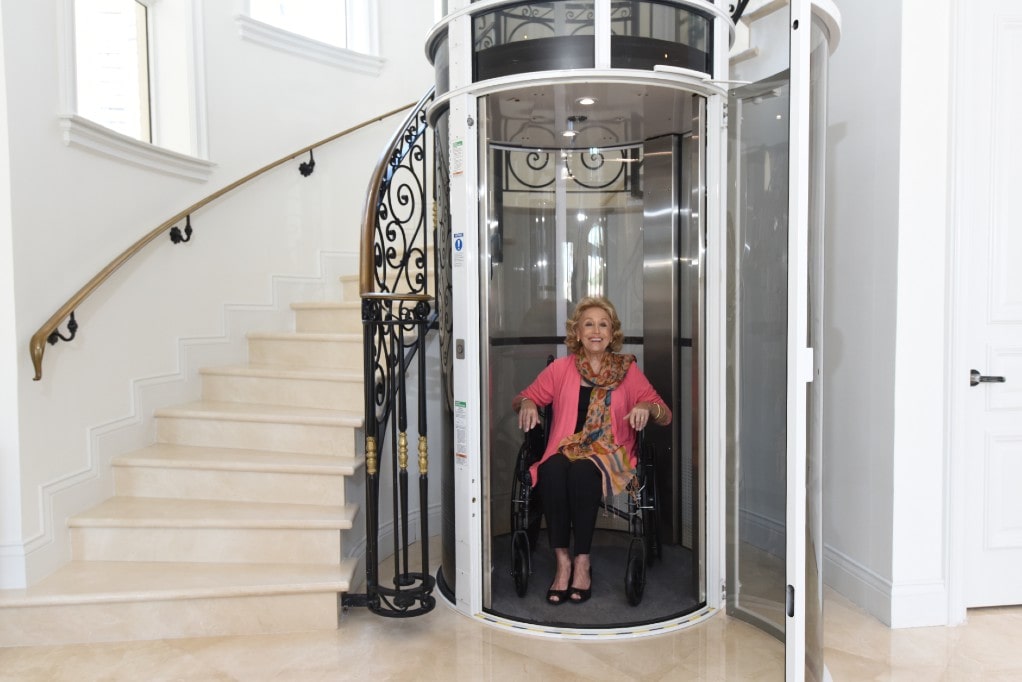Discover the most effective Disabled Platform Lifts Prices UK for Residential and Commercial Use
Discover the most effective Disabled Platform Lifts Prices UK for Residential and Commercial Use
Blog Article
Delving Into the Globe of Lifts: Usual Concerns Encountered by Numerous Lift Systems
As we navigate through the upright transportation systems of modern-day buildings, lifts stick out as a crucial element of our every day lives. Nevertheless, behind their smooth procedure lies a world of elaborate devices that can in some cases come across obstacles. From hydraulic elevators to traction systems and machine-room-less styles, each lift type features its set of common concerns. Comprehending these obstacles is vital for making certain the smooth performance of these crucial systems. Let's check out the intricacies that underlie the operation of elevators and the prospective concerns that can occur, losing light on the elaborate web of lift devices.
Hydraulic Lifts
Hydraulic elevators, commonly preferred for low-rise buildings, use fluid stress to regulate the activity of the lift auto (lift repair companies). This mechanism includes a hydraulic pump pressing oil into a cylinder, triggering the lift to relocate the preferred direction. While hydraulic lifts are understood for their silent and smooth operation, they do feature their very own set of common issues
One prevalent problem with hydraulic lifts is oil leakage. Furthermore, concerns with the control system, such as malfunctioning valves or a malfunctioning pump, can cause disruptions in the lift's movement.
Routine maintenance and prompt repairs are necessary to make certain the smooth performance of hydraulic elevators. By dealing with these usual issues proactively, building proprietors can reduce downtime and guarantee the safety and performance of their vertical transport system.
Grip Lifts
When considering upright transportation systems in structures, one more typical kind besides hydraulic lifts is the grip elevator. Grip elevators run making use of a system of ropes and weights that move the lift cars and truck by gripping onto the hoist ropes. This mechanism enables smoother and quicker vertical transport compared to hydraulic systems.
Among the usual issues dealt with by traction lifts is rope wear. The continuous activity of the ropes within the traction system can lead to tear and use in time, potentially creating the lift to malfunction or come to be hazardous for usage. Normal inspections and upkeep of the ropes are necessary to ensure the lift's correct performance and safety.
An additional issue that grip elevators might come across is associated to the control system. Issues with the control system can lead to problems such as unpredictable activity, hold-ups in feedback times, or perhaps complete closures. Routine screening and maintenance of the control system are important to avoid such concerns and guarantee the lift's dependability.
Machine-Room-Less (MRL) Lifts

One of the essential components of MRL elevators is the small gearless traction machine that is mounted within the hoistway. This device successfully drives the elevator vehicle without the demand for bulky equipment located in conventional grip lifts. In addition, MRL lifts typically use a counterweight system to stabilize the cars and truck, further boosting their energy efficiency.
In spite of their advantages, MRL elevators may face obstacles associated with repair and maintenance due to the restricted space for devices installment. Availability for servicing components within the shaft can be restricted, needing specialized training for technicians. Correct upkeep routines and normal evaluations are crucial to make certain the ongoing smooth procedure of MRL lifts.
Overloading and Weight Restriction Issues
Overwhelming and weight restriction concerns are important issues in lift procedures. Elevator makers layout lifts with certain weight abilities to ensure guest safety and security and equipment longevity.
When lifts are overloaded, it places too much strain on the motor, cords, and other elements, potentially creating malfunctions or malfunctions. If they find excess weight, safety devices such as sensors and overload sensing units are in location to protect against elevators from relocating. Additionally, going beyond weight limits can lead to increased energy intake and deterioration on the lift system.
To alleviate overloading problems, developing supervisors ought to prominently display weight restrictions in elevators and inform owners on the relevance of adhering to these limitations - lift repair companies. Routine maintenance checks by qualified service technicians can additionally help guarantee that elevators are running within safe weight criteria. By addressing overloading and weight limit concerns proactively, building owners can improve lift safety and security and effectiveness
Electric System Failings
Exceeding weight limitations in lifts my blog can not just lead to mechanical concerns but additionally possibly contribute to electrical system failures within the lift facilities. Electric system failings are a crucial concern in elevator operation, as they can create unforeseen closures, breakdowns, or even safety dangers.
In addition, power surges or content changes in the electrical supply can also disrupt the lift's operation, influencing its performance and safety and security. These electric disturbances can harm sensitive elevator parts such as control panels, circuit card, or sensors, bring about system failures. Routine maintenance and evaluations are essential to identify and deal with possible electric concerns quickly, guaranteeing the reliable and secure procedure of elevator systems. By adhering to weight restrictions and carrying out regular electric system checks, building owners can reduce the risk of electrical failings in lifts.
Conclusion

Hydraulic lifts, frequently liked for low-rise buildings, make use of fluid stress to manage the motion of the elevator automobile.When thinking about upright transportation systems in buildings, one more usual type apart from hydraulic lifts is the traction lift. Grip lifts run using a system of ropes and weights that move the lift car by grasping onto the hoist ropes. Unlike traditional lifts that call for a different maker room to house the tools, MRL elevators integrate many of the parts within the shaft, removing the requirement for a specialized machine area.In conclusion, lifts deal with usual problems such Read Full Report as hydraulic breakdowns, traction system failings, and electric system problems.
Report this page